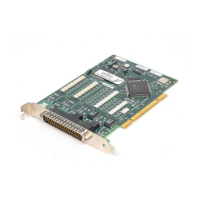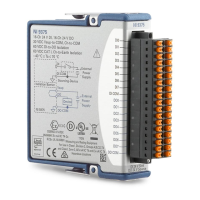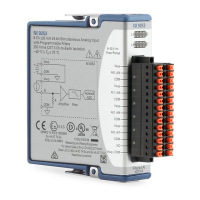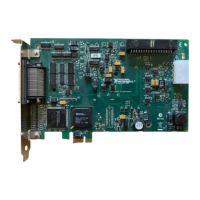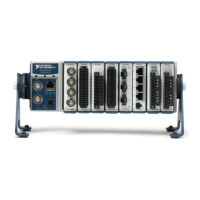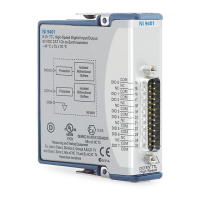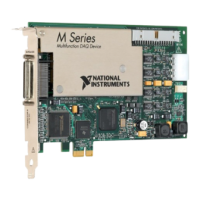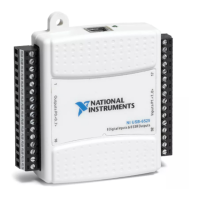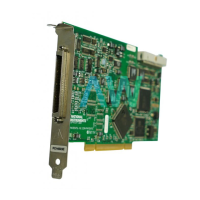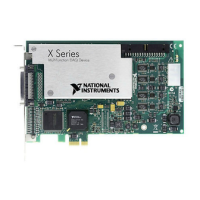Chapter 9 Digital Routing and Clock Generation
© National Instruments 9-7 X Series User Manual
• FREQ OUT
• PFI <0..5>
Note Signals with a
*
are inverted before being driven on the RTSI terminals.
Using RTSI Terminals as Timing Input Signals
You can use RTSI terminals to route external timing signals to many
different X Series functions. Each RTSI terminal can be routed to any of
the following signals:
• AI Convert Clock (ai/ConvertClock)
• AI Sample Clock (ai/SampleClock)
• AI Start Trigger (ai/StartTrigger)
• AI Reference Trigger (ai/ReferenceTrigger)
•AI Pause Trigger (ai/PauseTrigger)
• AI Sample Clock Timebase (ai/SampleClockTimebase)
• AO Start Trigger (ao/StartTrigger)
• AO Sample Clock (ao/SampleClock)
• AO Sample Clock Timebase (ao/SampleClockTimebase)
•AO Pause Trigger (ao/PauseTrigger)
•Counter input signals for all counters—Source, Gate, Aux, HW_Arm,
A, B, or Z
• DI Sample Clock (di/SampleClock)
• DI Start Trigger (di/StartTrigger)
•DI Pause Trigger (di/PauseTrigger)
• DI Reference Trigger (di/ReferenceTrigger)
• DO Sample Clock (do/SampleClock)
• DO Sample Clock Timebase (do/SampleClockTimebase)
Most functions allow you to configure the polarity of RTSI inputs and
whether the input is edge or level sensitive.
RTSI Filters
You can enable a programmable debouncing filter on each PFI, RTSI, or
PXI_STAR signal. Refer to the PFI Filters section of Chapter 8, PFI, for
more information.
Artisan Technology Group - Quality Instrumentation ... Guaranteed | (888) 88-SOURCE | www.artisantg.com

